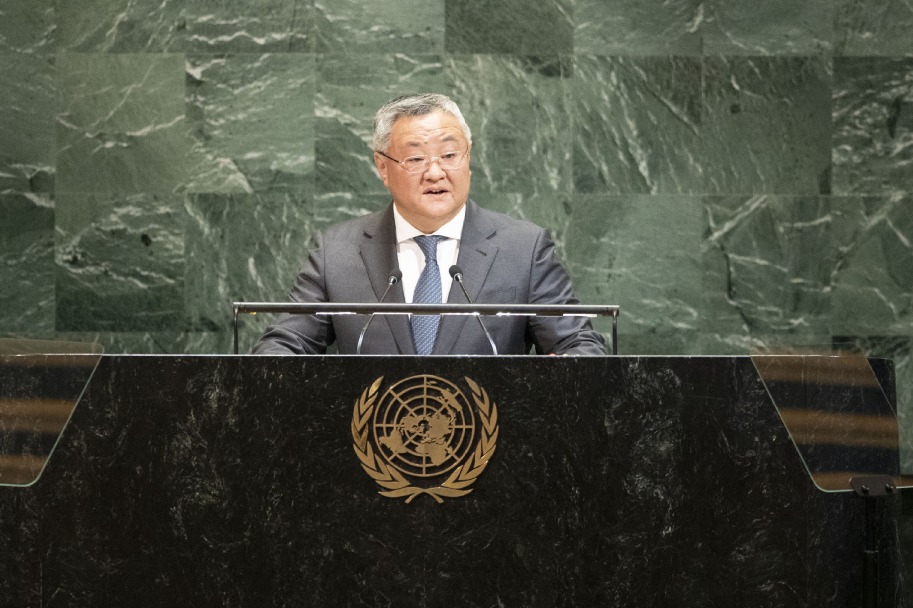Progress stokes optimism about usable fusion energy


European scientists have announced a further step toward the goal of creating usable fusion energy by creating a five-second burst of power-double their previous record.
The previous record was set 25 years ago, an indication of the slow progress of a technology that promises to harness the power of the stars to address the world's energy and climate crisis.
The technology has been around since the 1950s, and skeptics within the scientific community note that for more than half a century the promise of fusion has repeatedly been described as just decades away. So they have urged caution after the latest experiment, undertaken in Oxfordshire in the United Kingdom, was described as "a major milestone".
However, the scientists at the Joint European Torus project are not alone in reporting significant progress in fusion research.
In December, the Institute of Plasma Physics of the Chinese Academy of Sciences announced a record-breaking high-temperature plasma experiment undertaken in Hefei, Anhui province. Chinese scientists had previously revealed that they had discovered a new, cost-effective method of achieving nuclear fusion that could rival more expensive methods.
China is also building a fusion research facility to enable engineers to develop and test the key components of a fusion energy reactor. It is due for completion in 2024.
In the United States, meanwhile, the California-based United States National Ignition Facility announced in August that it had smashed its own 2018 record for energy released from nuclear fusion reactions with a 25-fold increase.
In the south of France, the world's largest ever magnetic fusion machine is currently under construction with the promise that it will have the scale needed to reach a net energy gain.
Because of the huge research costs involved, the sector has until now been dominated by government-funded projects.
However, the latest experimental advances have also generated interest within the private sector, with major investors now increasingly betting on the prospect of fusion energy becoming a commercial reality.
Germany's Marvel Fusion recently signed partnerships with Siemens Energy, France's Thales and German engineering group Trumpf and raised 35 million euros ($39million) in tech funding. The fusion sector as a whole attracted more than 2.3 billion euros in venture capital funding worldwide in 2021.
The Marvel model uses lasers to trigger atomic reactions rather than magnets and extreme heat. "It's a theoretical model, which is essentially a very large computer simulation, and then step by step it is being validated in an experimental campaign that started last year," Marvel Fusion chief executive Moritz von der Linden told the Financial Times. "If it works, it is the Holy Grail."
In theory, fusion energy offers significant advantages over existing power sources, particularly fossil fuels, as the world tackles the challenges of climate change and the need to reach net zero emissions.
Unlike nuclear fission, which powers existing nuclear plants by splitting atoms, fusion takes small atoms and fuses them, generating super-high temperatures in the process. It is a process that powers the sun and other stars.
Its advantages as a power source are that it creates neither carbon dioxide nor radioactive waste; its raw material, hydrogen, is ubiquitous; and fusion plants would occupy less space than green alternatives such as wind and solar power.
For the time being, however, even the latest experiments are still broadly theoretical. The actual usable energy produced has been barely more than would be needed to boil a few kettles.
But scientists are optimistic. "These landmark results have taken us a huge step closer to conquering one of the biggest scientific and engineering challenges of them all," said Ian Chapman, head of the UK Atomic Energy Authority, when commenting on the Oxfordshire results.
"It's clear we must make significant changes to address the effects of climate change, and fusion offers so much potential," he said.
Current interest in fusion has been heightened not only by the climate crisis, but also by the recent squeeze on traditional energy supplies that has particularly affected Europe.
The pace of progress now appears to be accelerating, although the promise of fusion as a silver bullet that will solve the energy challenge may still be a way off.
There are still enormous engineering challenges to be resolved, while investors have to be convinced that potential energy output will exceed input at levels that will make fusion commercially viable.
But at last there is optimism that the promise of fusion might now be somewhat closer than a few decades away.
The author is a senior media consultant for China Daily UK.































